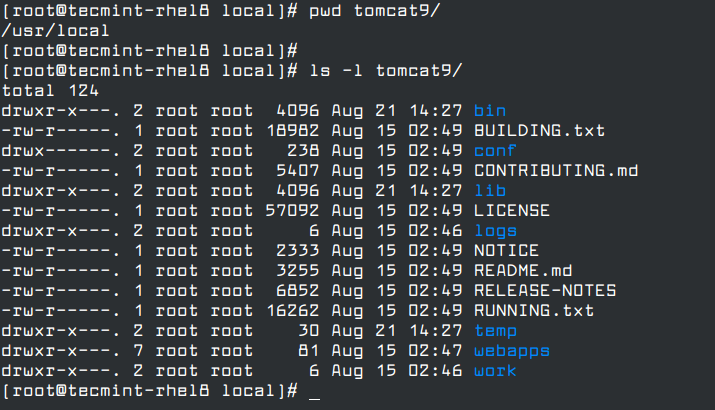

Instead, you can use the standard Java which supports size-based rotation. does not support rotation based on file size and does not have the limit and count properties you are trying to set ( see docs). #.AprLifecycleListener.level=FINEīut .FileHandler.limit = 100000 doesn't seem to be working # For example, set the logger to only log SEVERE

# Provides extra control for each logger. # Describes specific configuration info for Handlers.ġ.FileHandler.level = FINEġ.FileHandler.directory = e:/apache-tomcat/logs/server_111-1001ġ.FileHandler.prefix = catalina.ġ.FileHandler.limit = 100000 # size 100kbġ.unt = 5Ģ.FileHandler.level = FINEĢ.FileHandler.directory = e:/apache-tomcat/logs/server_111-1001Ģ.FileHandler.prefix = localhost.ģ.FileHandler.level = FINEģ.FileHandler.directory = e:/apache-tomcat/logs/server_111-1001ģ.FileHandler.prefix = manager.Ĥ.FileHandler.level = FINEĤ.FileHandler.directory = e:/apache-tomcat/logs/server_111-1001Ĥ.FileHandler.prefix = host-manager. Logging.properties handlers = .FileHandler, .FileHandler, .FileHandler, .FileHandler, This is how I configured by logging.properties to set a size limit.
#Apache tomcat logs path windows#
I'm running tomcat as a windows service and am redirecting all my stdout to catalina.log. 192:~ $ tail -f /Users/zhaosong/Documents/WorkSpace/tool/apache-tomcat-9.0.8/logs/catalina.I'm trying to configure my tomcat to rollover log files once a size limit is reached.

So to live show tomcat logs, you can use tail -f command in the terminal, the tail -f command will display the latest logs in the catalina.out file in terminal. Tomcat logs are saved in the Tomcat_Home/logs/catalina.out file.The tomcat startup.sh will call the catalina.sh to start it. If you do not know where the tomcat is installed, you can run the below command to get it.Do not be crazy, let us follow the below steps to show the tomcat log in live time.This makes you seriously when you want to see the log to fix bugs or resolve errors in live time. After section one, you can start the tomcat server from anywhere, but after the start, you are confused that it does not output the tomcat logs in the terminal.Now you can start/stop the tomcat server at any directory level in the terminal.Run source command in the terminal to make the change take effect.Press shift + : then wq! to save the changes.PATH="/Users/zhaosong/Documents/WorkSpace/tool/apache-tomcat-9.0.8/bin:/Users. Press i in vim to insert text, then copy and paste Tomcat_Home/bin folder to PATH value. Add Tomcat_Home/bin folder in the PATH variable value.To resolve the above issue, you can add the Tomcat_Home/bin folder into the OS PATH environment variable value, then you can type startup.sh/shutdown.sh at any directory level to start/stop it.You have to remember the Tomcat_Home directory, this is not user-friendly.
#Apache tomcat logs path how to#
The How To Install Tomcat In MacOS is not perfect because you must go to Tomcat_Home/bin folder to run the startup.sh/shutdown.sh to start/stop the tomcat server for each time.Add Tomcat Executable In Path Environment Variable.


 0 kommentar(er)
0 kommentar(er)
